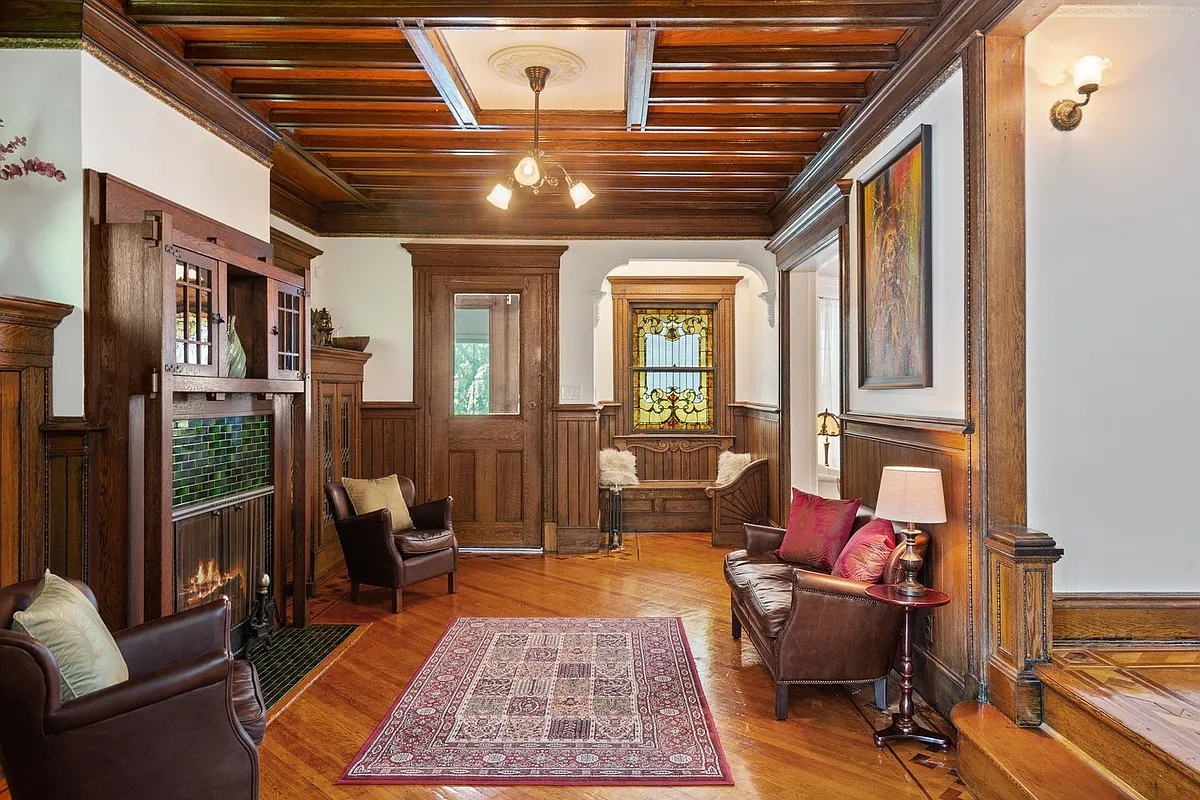Arion Hall: Before the Lofts
Earlier this week, the Waterfront Alliance posted this image of Bushwick’s Arion Hall back in its glory days of the early 20th century. Long before it was converted into lofts back in 2004 by Mayer Schwartz (and long before it was a mystery building on Brownstoner), the building was a center of culture and fun…


Earlier this week, the Waterfront Alliance posted this image of Bushwick’s Arion Hall back in its glory days of the early 20th century. Long before it was converted into lofts back in 2004 by Mayer Schwartz (and long before it was a mystery building on Brownstoner), the building was a center of culture and fun for the German population. While Arion Hall survived, its smaller Second Empire neighbor to the left did not. Do any readers currently live here? We’d be curious to hear about it.
Arion Hall [WPA] GMAP
Bushwick Mansions [Forgotten NY]





My grandparents had their wedding reception in the Arion Rose Room on November 9, 1947. Their wedding portrait there doesn’t show much of the interior architecture, but I’d love to find more pictures of what it was like inside then.
Wallabout was named for the Walloons, the first European settlers in the area (ca. 1640s, I think). Their settlement was at the north end of Wallabout Bay, north of Divison Avenue (probably somewhere between Schaeffer Landing and the bridge).
I have no idea where the name of this Wall Street came from, but its interesting to note that there is a Beaver Street around the corner – and Wall and Beaver are streets in lower in Manhattan.
Thanks, anonymous. It is so easy to misinterpret information and just as easy to spread it. I now wonder how this Brooklyn “Wall Street” got its name. I doubt it has any relation to Wallabout, which as I understand it, had to do with a wall around the swampy Navy yard area.
I walked past the Arion building today to take it in with the new information this site has provided. Sad to see the second set of columns missing but glad to see it as a place with some life happening inside. I wonder if there are any large halls still in existance inside where performances or rehearsals took place, or has the interior changed racically since then? Anyone?
Keith,
The hall on Wall street is actually this building. The street was originally Wall street, it was renamed Arion Place due to this very building.
BTW, the Brooklyn Daily Eagle reported the Foundation Stone ceremony of this building. Part of the ceremony was that they inserted a Time Capsule in the Foundation Stone.
Fabulous. I live in the neighborhood of Arion Street(on the Bed/Stuy side) and have noticed it from the elevated J line. The big A on the building and the street name gave me some hints, so I did some research, finding plenty on the Brooklyn Daily Eagle’s search engine. (www.brooklynpubliclibrary.org/eagle/index.htm). The Arion was not the only choral society in town, but it was a factor of Victorian Brooklyn life, and the news reports are fascinating. They had a hall on Wall Street as well (I think before they located in Brooklyn.) I am increasingly entrigued by the past that is evident in the surviving architecture in Brooklyn. I feel as though I live in an archeological site, with treasures all around me waiting to be understood. And at the same time, reminded of all those forces that exist which created the current conditions although we like not to think about them: racism and class issues. Bed/Stuy seems almost quaint now, but it wasn’t that way not so long ago. I understand the 70’s were particularly ugly. People did survive and some buildings did too. While I obsess over surviving architecture, the survivors are not so visible but I suspect the stories they have are just as interesting and valuable.
You can also go out and buy a tree on your own and plant it. If you own the house, why wouldn’t you plant yourself. And you don’t have to wait one year. Oh yeah, I forgot, the city gives away trees for free, so I guess no one wants to buy on their own and plant them.
Tree pointers: Do contact your community board, they can help with the process. Also be aware that the Parks Dept does spring and fall plantings, so the time to get the tree can depend on a) when you order, and b) if you order a tree that is better planted in the spring or the fall.
write or call your community board they can push tree plantings to move a lot faster.
thanks for the info! egreek, you’re back! i can’t believe it took a year to get the tree. actually, i can totally believe it.